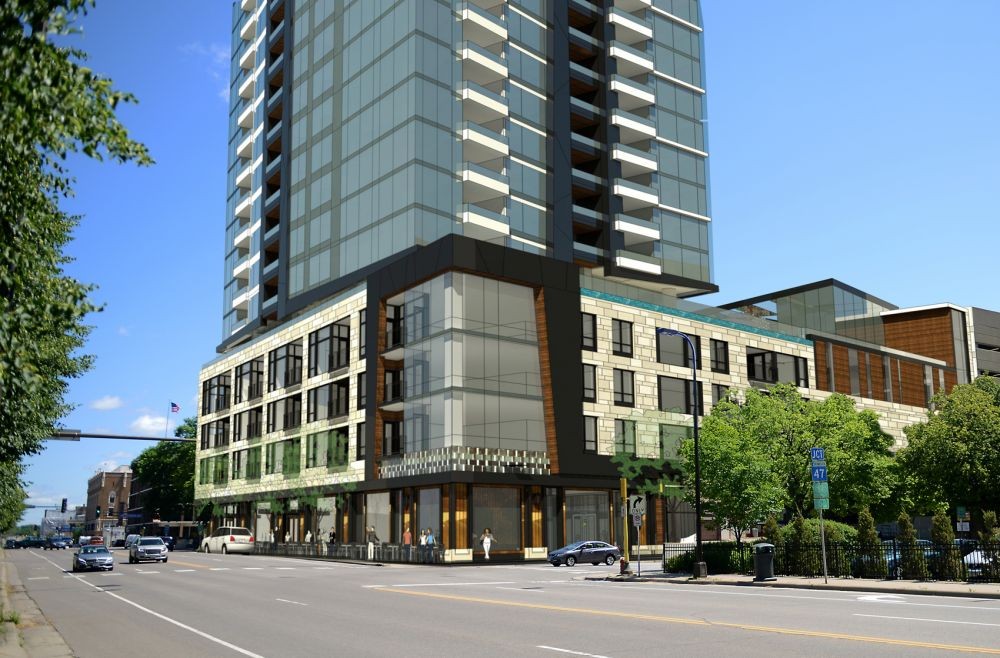A lawsuit filed by a Marcy-Holmes neighborhood committee has delayed the construction of a new condominium complex.
The group, Neighbors for East Bank Livability, alleges the building will damage the historical value of the neighborhood, which is one of the oldest in Minneapolis. The luxury 40–story tower, called 200 Central Condominiums, was proposed by developer Alatus LLC and would be located at 200 Central Avenue, near St. Anthony Main.
NEBL’s attorney William Griffith said the condominium is a bad idea for the neighborhood, adding that for the people of NEBL, the historic value has always been the most important aspect.
“The historical district is on the National Register of Historic Places. It’s the largest historic district in the city of Minneapolis, and there are a number of projects that would damage the district. Alatus just happens to be one of them,” Griffith said.
This isn’t the first time NEBL has been involved with historic buildings in the area. Last year, the group successfully campaigned to reduce a new apartment complex that replaced Nye’s Polonaise Room from its original 29 stories to six.
Alatus, a Minneapolis–based real estate developer, has a vision of returning Marcy–Holmes to the bustling neighborhood it once was.
“If you walk that area, you don’t see the foot traffic they saw in the ‘40s and ‘50s. Bringing people back into that neighborhood is a goal of ours,” said Chris Osmundson, development director for Alatus.
Despite outcry from residents and community members about the height of the complex, Osmundson maintains that the building would be a gateway to Northeast Minneapolis. Additionally, there are already many other tall buildings in the area, he said.
But the main area of focus for the NEBL is the history of the area as the first neighborhood in the city of Minneapolis. While Osmundson said he understands the importance of the historical district, it’s important to look at it contextually.
“The context of the historic district in and of itself is already very damaged,” Osmundson said. ”I understand and appreciate the historic district, but the city of Minneapolis has priorities that are equal to if not greater than preserving this historic district, and one of those is increasing residents in this metropolitan area.”
The judge in the case dismissed the first part of the lawsuit, which focused on the alleged historic damage that would be done to Marcy-Holmes.
The second part involves Minneapolis and Alatus. The judge is tasked with deciding whether or not the city acted in a capricious manner.
“The city didn’t follow its own rules, and that’s the reason we have this lawsuit,” Griffith said.


